When it comes to the best winter hiking, there are options all across the United States from snow-covered trails in the Northeast to finally bearable temperatures on trails in the desert. Whether you’re looking for a winter challenge or to take on a popular trail without the crowds and heat, keep reading for the best winter hikes in the US.
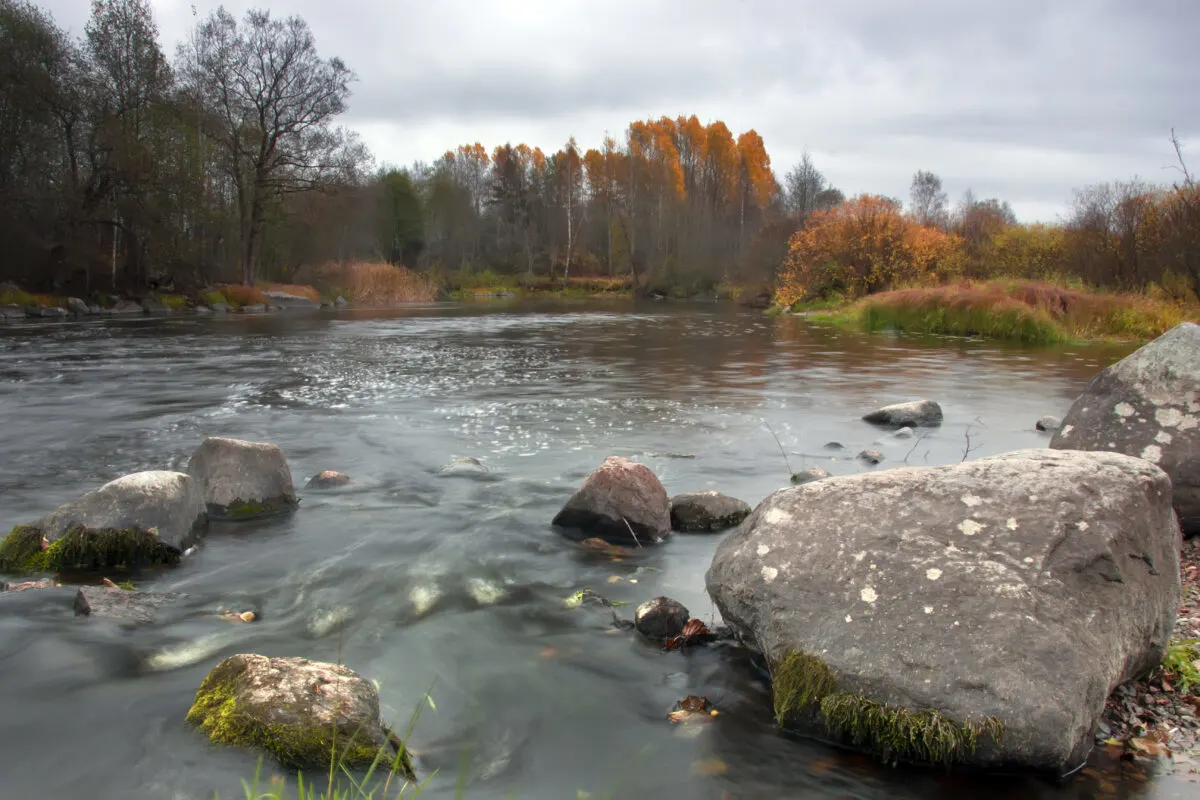
Winter can be cold but it can also be an incredibly rewarding opportunity to hit a hiking trail or two. While cozying up with a cup of cocoa in hand and a good book sounds super enticing, there’s something special about getting out of your comfort zone and braving nature when you least want to. Plus, spending time in nature and moving your body has been proven to help beat the winter blues, so there’s that!
Not to mention that winter is the best time for some of the most popular hikes in the US. Destinations like Death Valley National Park are scorching hot in the summer but mildly pleasant in the winter.
If you’re new to winter hiking, the US national parks are a great place to start. Many of the open trails tend to be well maintained and many don’t receive a ton of snow. In fact, some of the hikes on this list are the perfect places to go if you’re trying to avoid the snow!
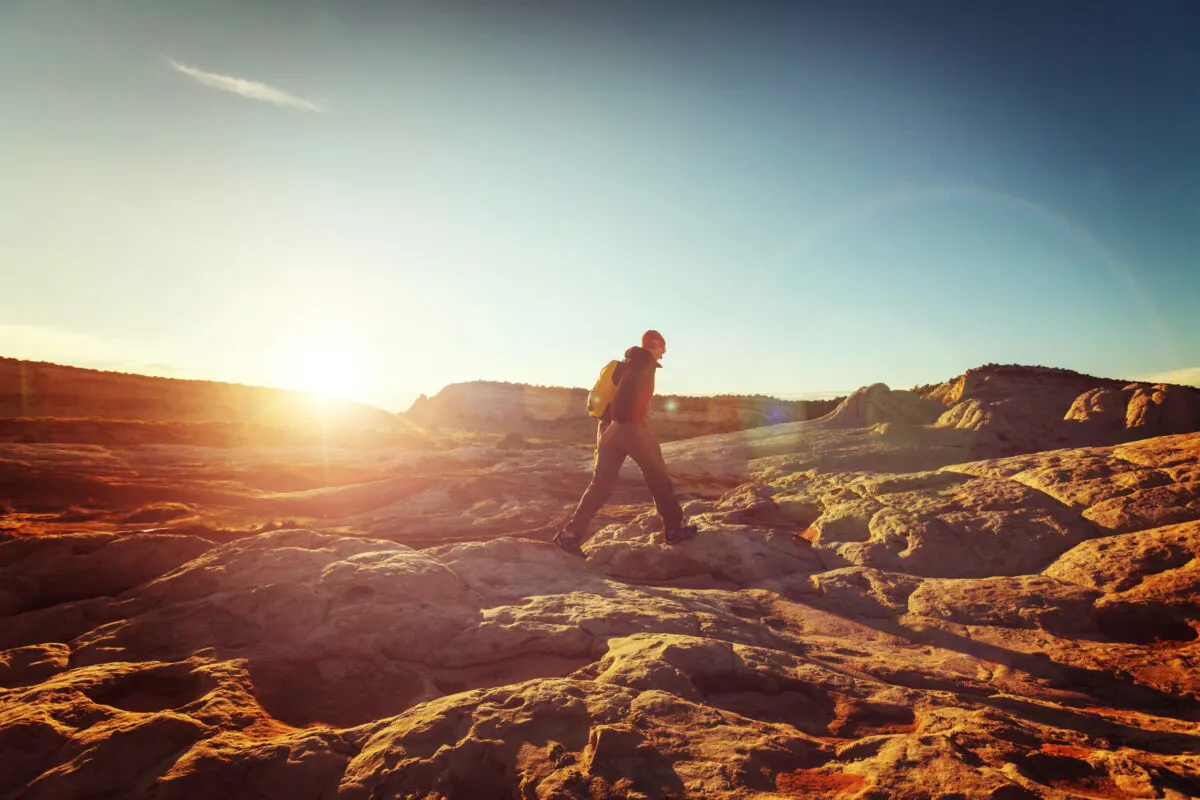
From the deserts of Utah to the alpine beauty of Colorado, these gorgeous hiking destinations are a must on your travel bucket list if you want to get outside this winter!
And if winter isn’t your preferred season, check out our list of the 16 best hiking destinations in the US for some year-round hiking suggestions!
9 Amazing Places for Winter Hikes in the USA
The best winter hiking in the US can be found across the country, in the national and state parks. If that sounds intimidating, don’t worry – these winter hikes in the US include options for everyone.
Arches National Park, Utah
Home to over two thousand natural archways, otherworldy-looking rock formations, and enormous red rock mesas, a hike through Utah’s desert dreamland will make you feel as though you skyrocketed your way into Mars.
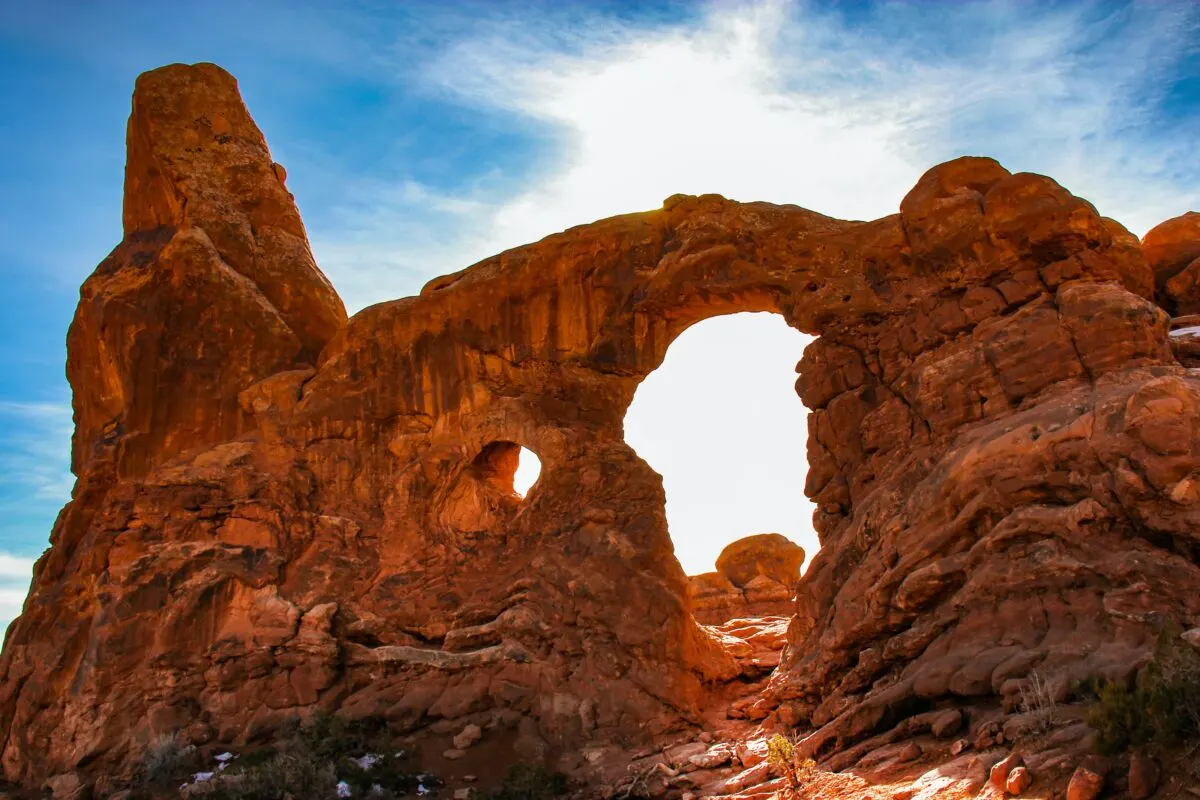
Despite the chilly temperatures, a winter trip to Arches National Park is an absolute treat. It’s a snowy, red rock desert wonderland treat you won’t soon forget.
With temperatures of summer reaching the hundreds and the crowds of fall and spring jamming the trails, a visit to Arches in winter means getting to experience the best of both worlds – seeing a truly unique side to the park and getting to have some of the best viewpoints pretty much all to yourself.
Recommended winter hike in Arches National Park: The Devil’s Garden Loop is the longest trail in the park (7.8 miles) and a must-do if you want to cover as much ground as possible during your visit. While hiking, you’ll get to see a few of the most iconic arches in the national park, as well as insane-looking landscapes you won’t believe belong on this planet!
Telluride, Colorado
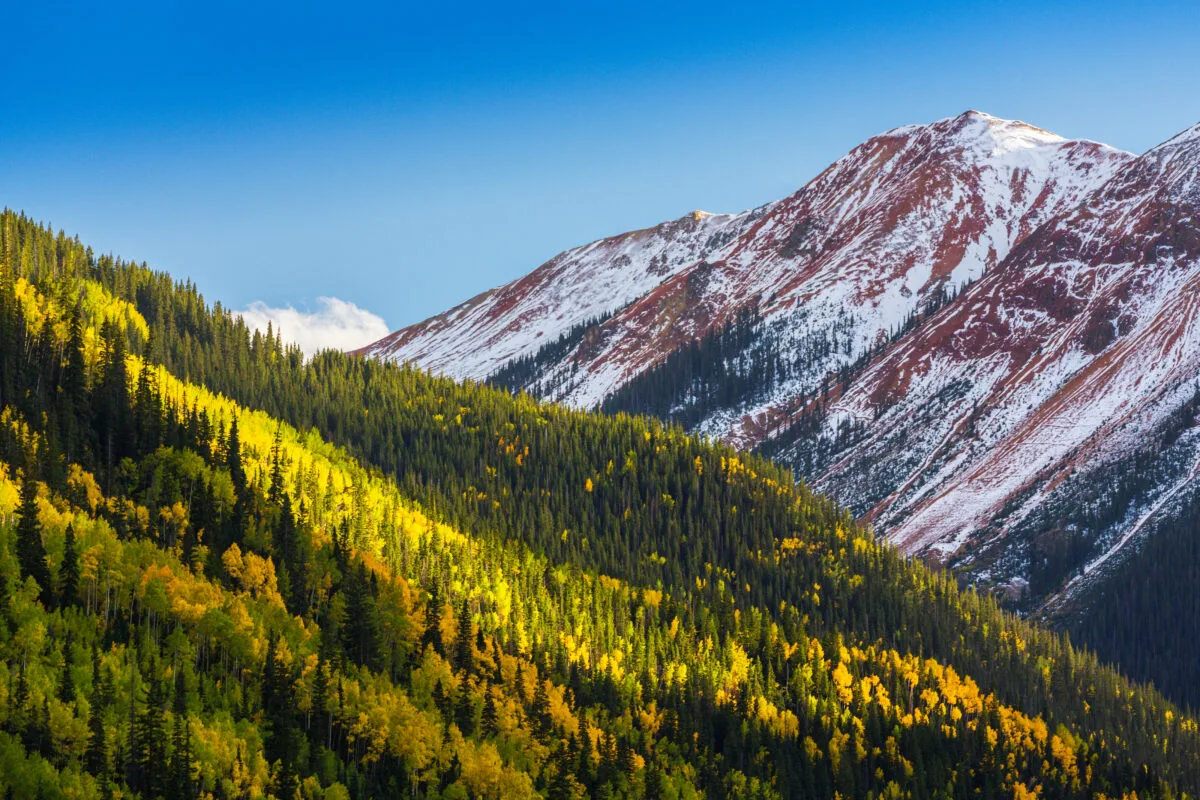
Telluride may be famed for its snow, but it remains mysteriously sunny for around 300 days of the year. This picturesque mountain town in Colorado boasts jagged peaks, lush alpine valleys, and some of the best hiking trails in the world. While some trails do close due to avalanche danger, a few of them are deemed safe enough to enjoy even during the snowy season.
Plus, once you’re done hiking, you can soak in the beauty of Telluride’s downtown, hit the slopes on a ski adventure, or relax your muscles at the many hot springs that surround the area!
Recommended winter hike in Telluride: The Jud Wiebe Trail, a three-mile-long hiking trail that’s close enough to town to get a bird’s eye view of its quintessential beauty!
Rocky Mountain National Park
While Rocky Mountain National Park may be an extremely popular summer destination, there’s absolutely no reason you shouldn’t visit this enchanting national park during the winter months. The layers of snow add an extra touch of beauty to its alpine goodness, and the colder temps mean the crowds are long gone.
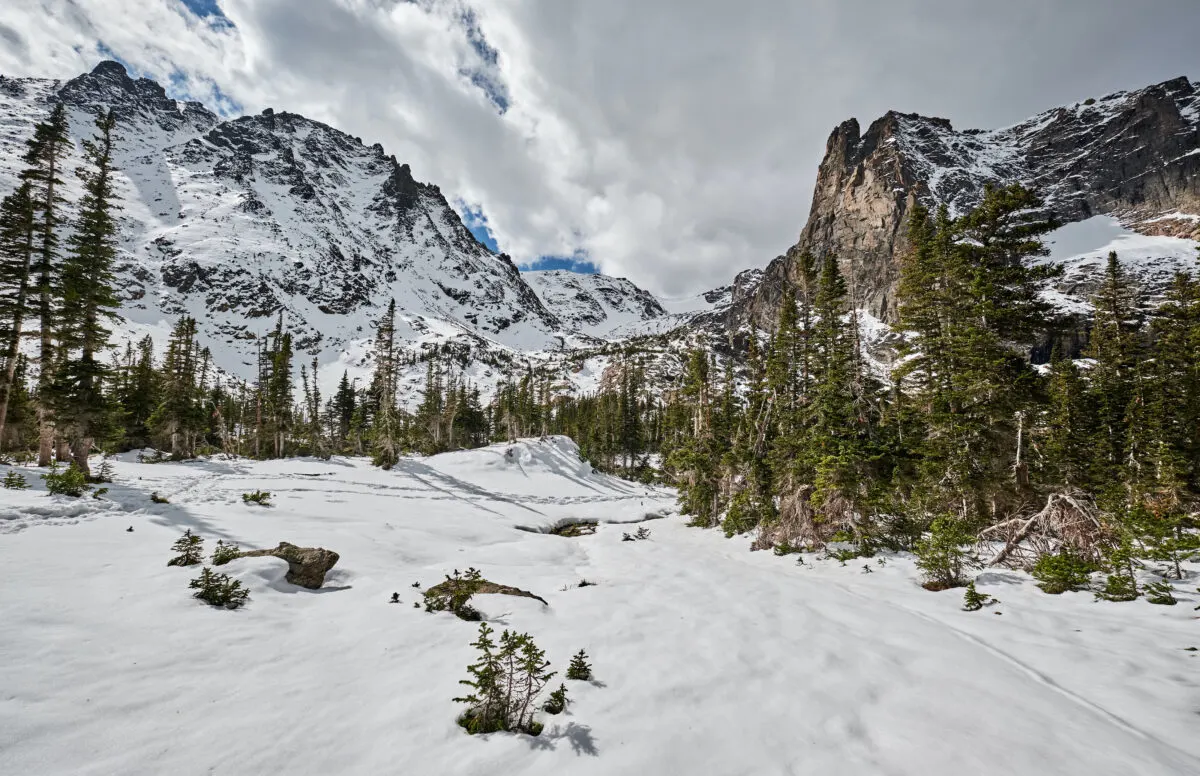
Just make sure to pack lots of layers, snowshoes, microspikes, and check the avalanche forecast before hitting the trails and you’ll be all set for an epic winter hiking adventure!
Recommended winter hike in Rocky Mountain National Park: The Emerald Lake Hike is an easy, relatively short (3 miles) hike. It takes you to three of the most iconic lakes in the park: Emerald Lake, Nymph Lake, and Dream Lake. While the hike is super popular any other time of the year, you’re very likely to get the vistas all to yourself during the winter. Plus, the snow and frozen lakes make for an astonishingly beautiful view.
Death Valley National Park, California
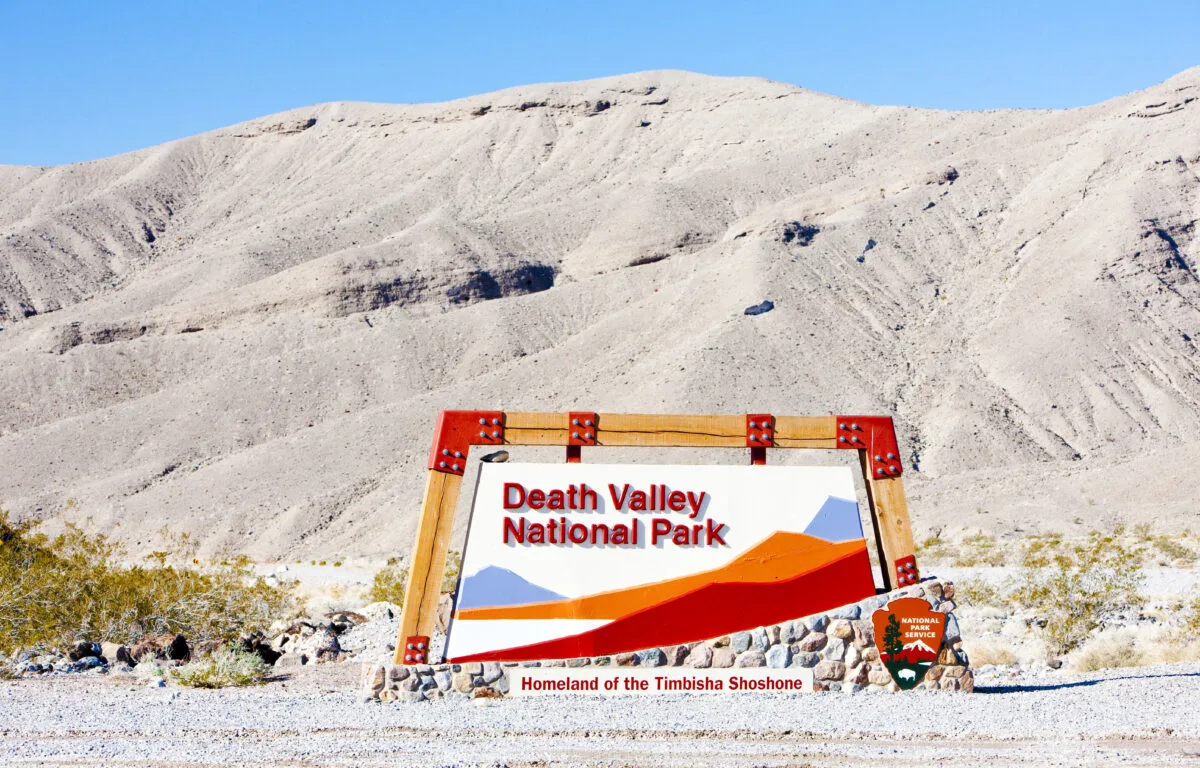
With temperatures surpassing the hundreds during the summer months, going for a hike in Death Valley isn’t exactly a walk in the park. Come winter, though, the weather cools off. That makes it the perfect time to experience the desert magic of this epic national park in California.
Despite its somewhat morbid name, Death Valley brims with life and colors. Hitting its trails means stumbling across eerie-looking trees, hills and rocks splashed with colors, and enormous salt flats are far as the eye can see.
Recommended winter hike in Death Valley National Park: The Golden Canyon and Gower Gulch Loop is a classic for first-timers to get an introduction to this unique place. As you hike through the golden sandstone canyon, you’ll stumble across the badlands of the Amargosa Mountains, tight canyon walls, and landscapes so special you’ll have to double-check you’re actually on planet Earth!
Sequoia National Park, California
Located on the slopes of the Sierra Nevada Mountains in California, Sequoia National Park is known for being the home to most of the world’s sequoias, the biggest trees in the world.
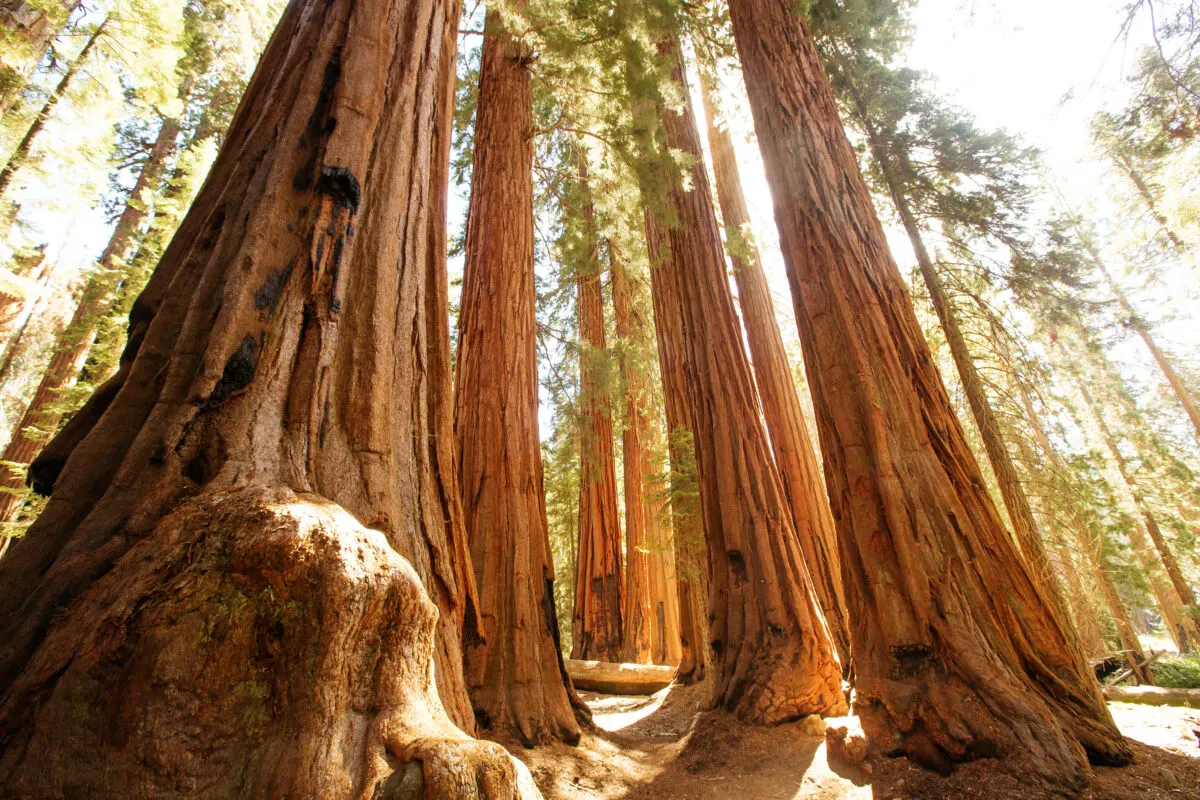
While visiting this gem of a park is astounding year-round, there’s something insanely beautiful about seeing the contrast of the snow against the bright red sequoia barks.
Recommended winter hike in Sequoia National Park: The Big Tree Trail is a relatively short 1.3-mile loop that will mesmerize you with views of enormous sequoia trees dusted in fluffy white snow. Another must-do is snowshoeing the Congress Trail, where you’ll get to see the world’s third-largest tree and a massive grove of sequoias called The Senate. (this is an epic spot for photos!)
Gulf Islands National Seashore, Florida
The Gulf Islands National Seashore actually stretches across western Florida into Mississippi – which means that during the summer months it’s hot and humid (though still beautiful). But during the winter? It becomes the ultimate getaway from the colder weather.
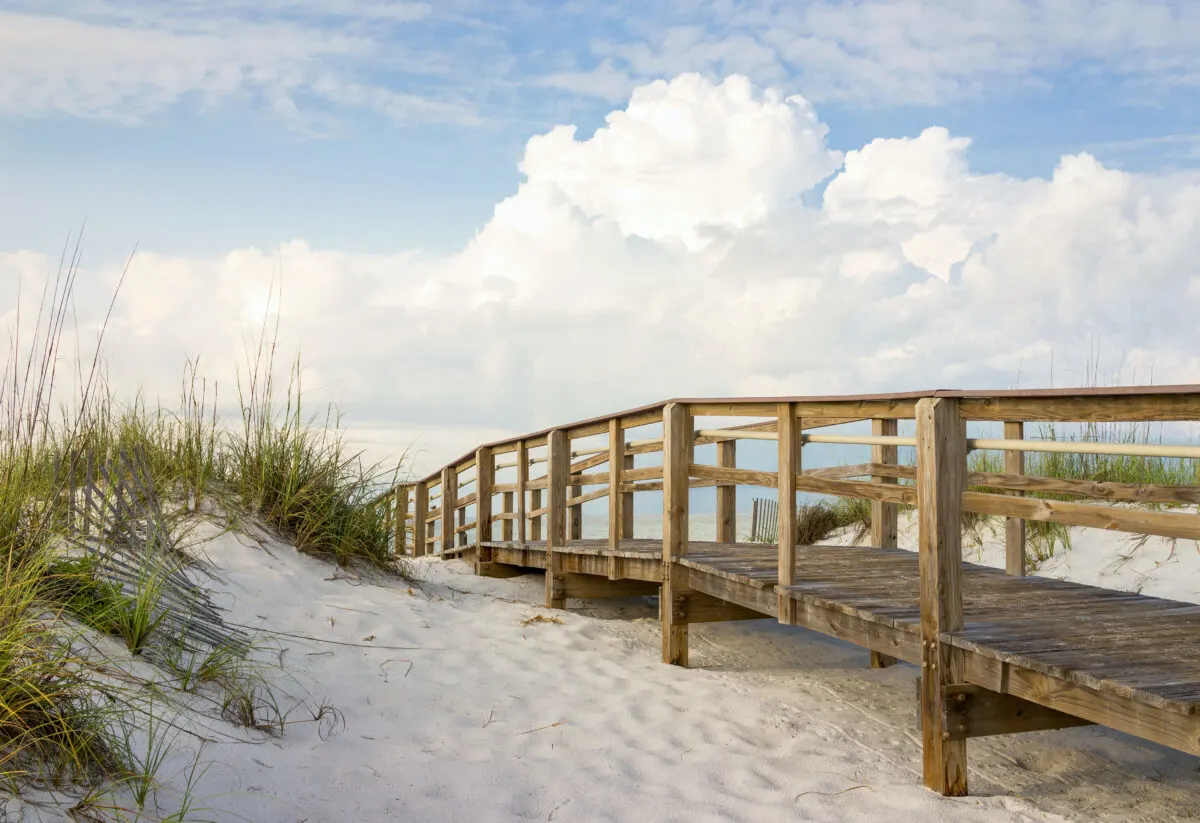
The park encompasses several white sand beaches, including Perdido Key, which is known as one of the most beautiful beaches in the country. And while you can certainly spend some time relaxing on the beach, there are miles and miles of trails to explore too.
Recommended winter hike in Gulf Islands National Seashore: The Naval Live Oaks area of the seashore offers miles of trails through the woods and along the bay. It’s the best of both worlds.
Zion National Park, Utah
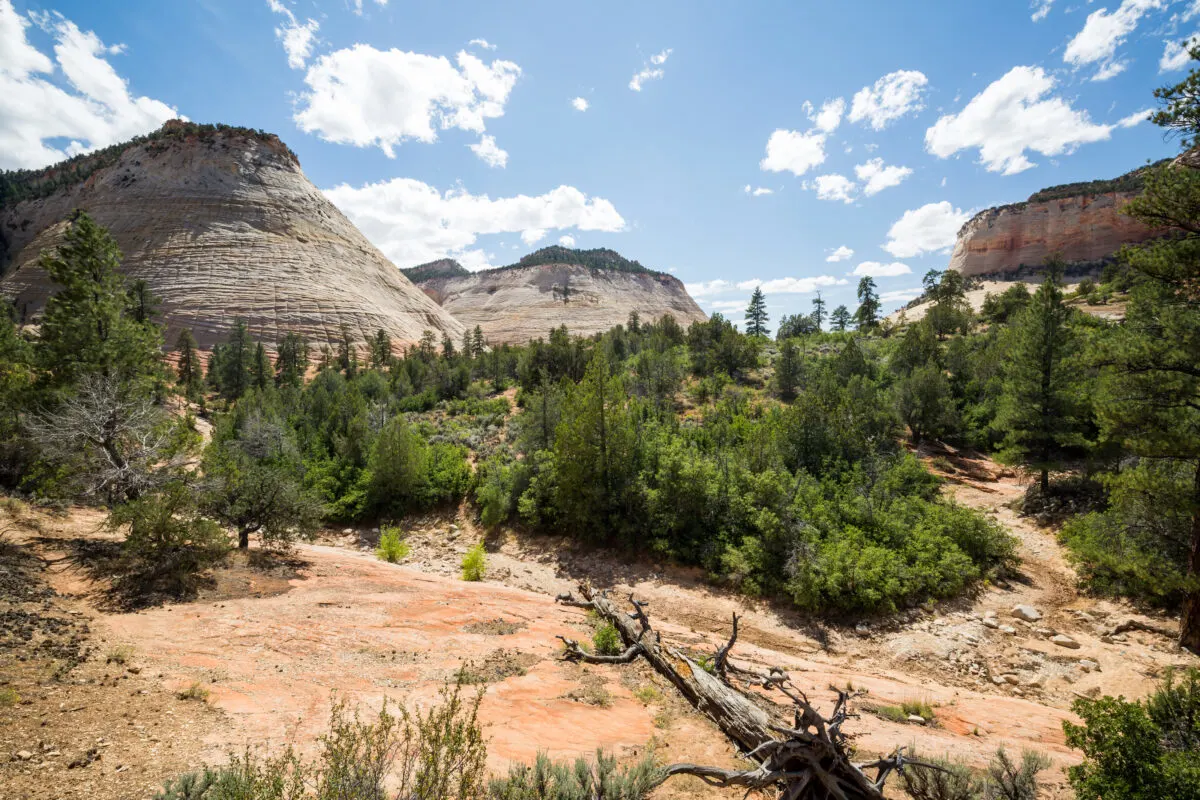
As one of Utah’s “Mighty 5”, Zion National Park is one of the top attractions in the state during the summer months but it should not be overlooked during the winter months. In fact, some of the best winter hikes in the US are found within the park.
Zion does get cold and wet during the winter and it does snow occasionally. Some of the park will shut down, such as Lava Point, the South Campground, and the Human History Museum closes, but many of the trails remain open.
Recommended winter hike in Zion National Park: The Watchman Trail is a popular 3 mile hike in Zion that’s even more beautiful in the winter. It’s a relatively easy out-and-back hike just within the South Entrance, that offers up some pretty epic views with just 400 feet in elevation.
Acadia National Park, Maine
If you’re looking to take advantage of the snow and not avoid it, Acadia National Park is the place to go. One of our favorite stops on the Maine Coast road trip, Acadia is home to some pretty epic hikes – and lots of snow in the winter!
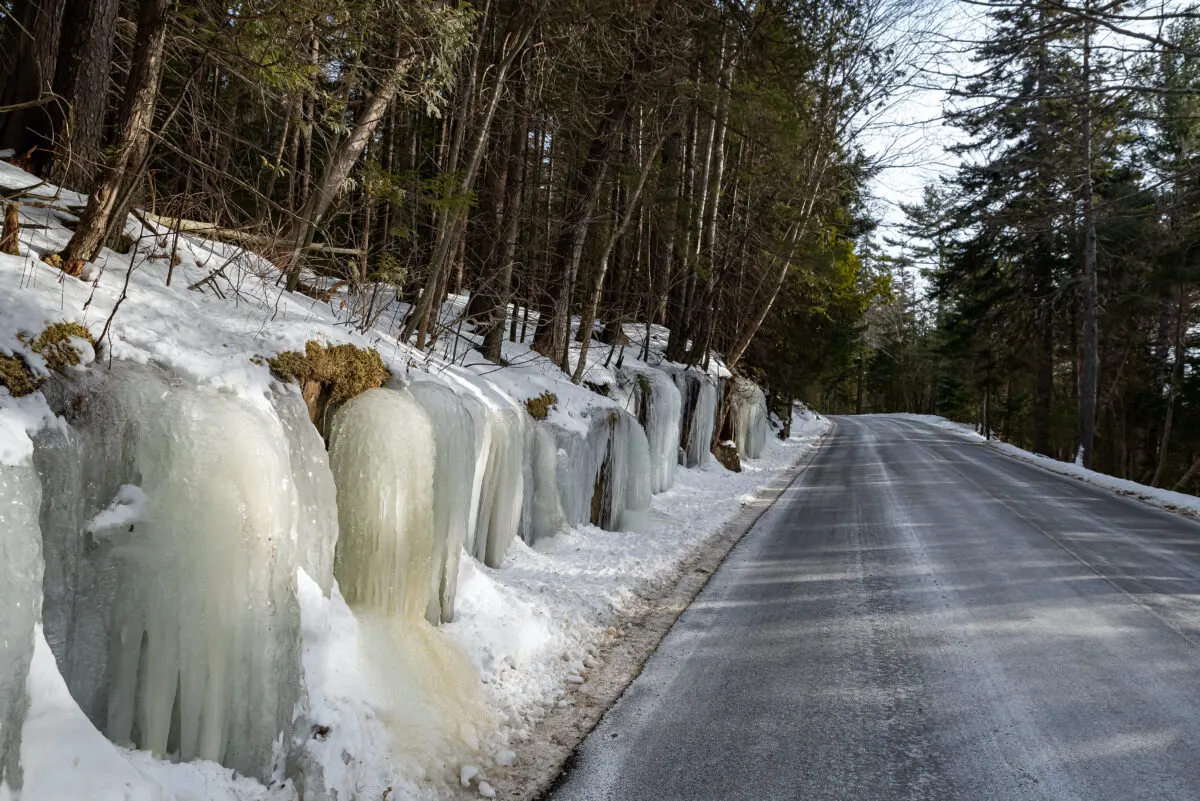
To hike in Acadia during the winter, you’re going to need proper equipment and apparel, including snow shoes or cross-country skies. Unlike some of the other hikes mentioned, this is one that will likely involve lots of snow and some ice, so you want to make sure you’re prepared and follow all safety precautions.
Recommended winter hike in Acadia National Park: If you’re venturing into Acadia National Park in the winter, you’re likely looking for a challenge – and you’re all but guaranteed to find it on the Gorham Mountain Loop. This 3.5 mile loop is considered difficult in the summer due to uneven terrain, so be prepared for an invigorating but challenging winter hike.
Adirondacks, New York
The Adirondacks region of New York is home to many worthwhile hikes, no matter the season. But the winter snow adds an extra layer of magic to an already stunning landscape. The region tends to receive several feet of snow each year, so this is another US winter hike for those actively looking for snow-covered trails.
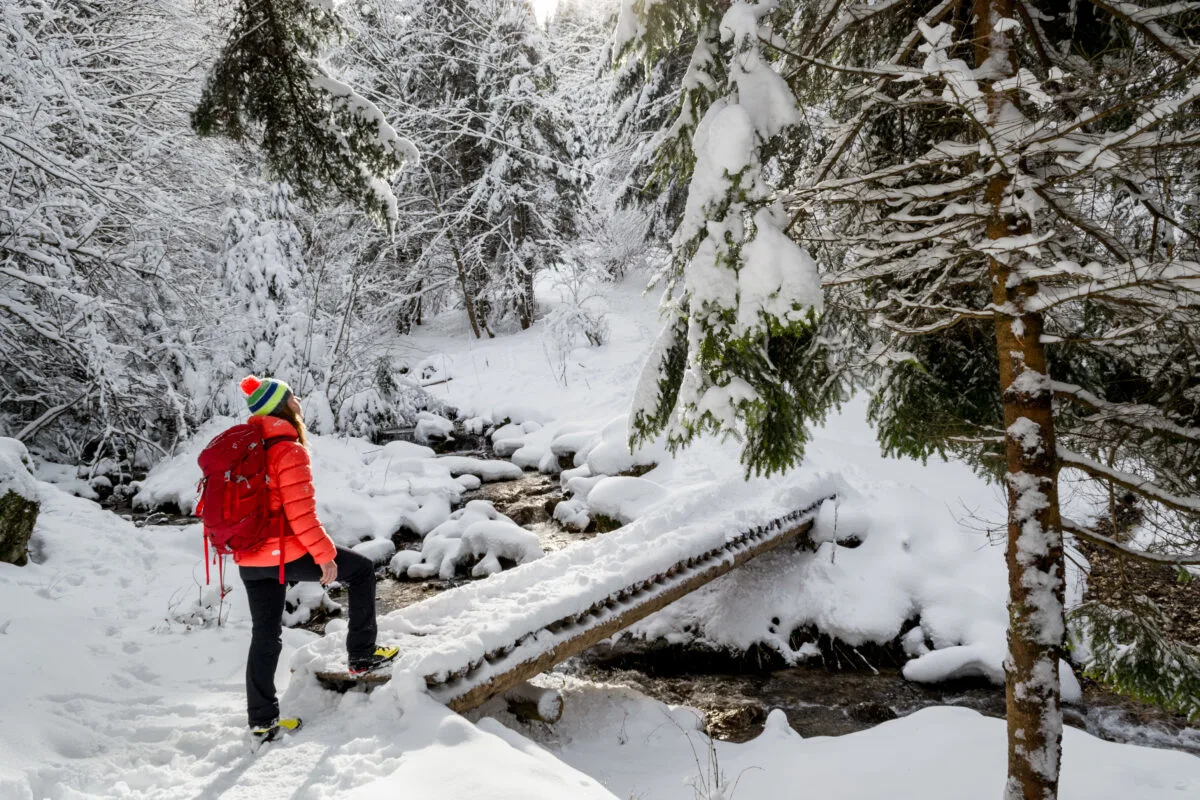
Many of the hikes throughout the Adirondacks close during the winter but others stay open for those looking for adventure. You should be prepared with extra warm clothing, snow shoes, and equipment such as microspikes and always keep an eye on the weather.
Recommended winter hike in the Adirondacks: Cascade Mountain, near Lake Placid, is New York’s 36th tallest peak and one of the hikes that does stay open year-round. The trail is just under 5 miles round-trip and offers incredible panoramic views at the summit. Note that this is a fairly strenuous hike and snow shoes and microspikes are required.
Tips for Winter Hiking in the USA
No matter which of these winter hikes in the US you choose, there are a few things you’ll want to keep in mind.
- Keep a close eye on the weather. Especially in destinations like the Adirondacks, the weather can change quickly. Be willing to turn back if it becomes unsafe to continue.
- Be honest about your abilities. If you’ve never hiked in the winter before, you probably don’t want to start with one of the more strenuous snow-covered mountains.
- Leave no trace. As always, you should follow the Leave No Trace principles when hiking in the winter.
- Get travel insurance. This is very important if you’re traveling to the US from abroad or even just traveling out of state. Do be sure to read the fine print and ensure that winter activities are covered, as some travel insurance companies include quite a few “adventure activity” limitations. We use and recommend SafetyWing for our travel insurance needs.
- You may need a rental car. If you aren’t driving your own car, you’ll likely need to rent a car to reach most of these trails. Public transportation is typically not available as most of these hikes are quite a ways from major cities and airports. Check DiscoverCars to find the best rate.
Have you visited any of these incredible winter hiking destinations in the USA? We’d love to know more about your experience as well as what your favorite winter trails are, so make sure you drop them in the comments section below.
